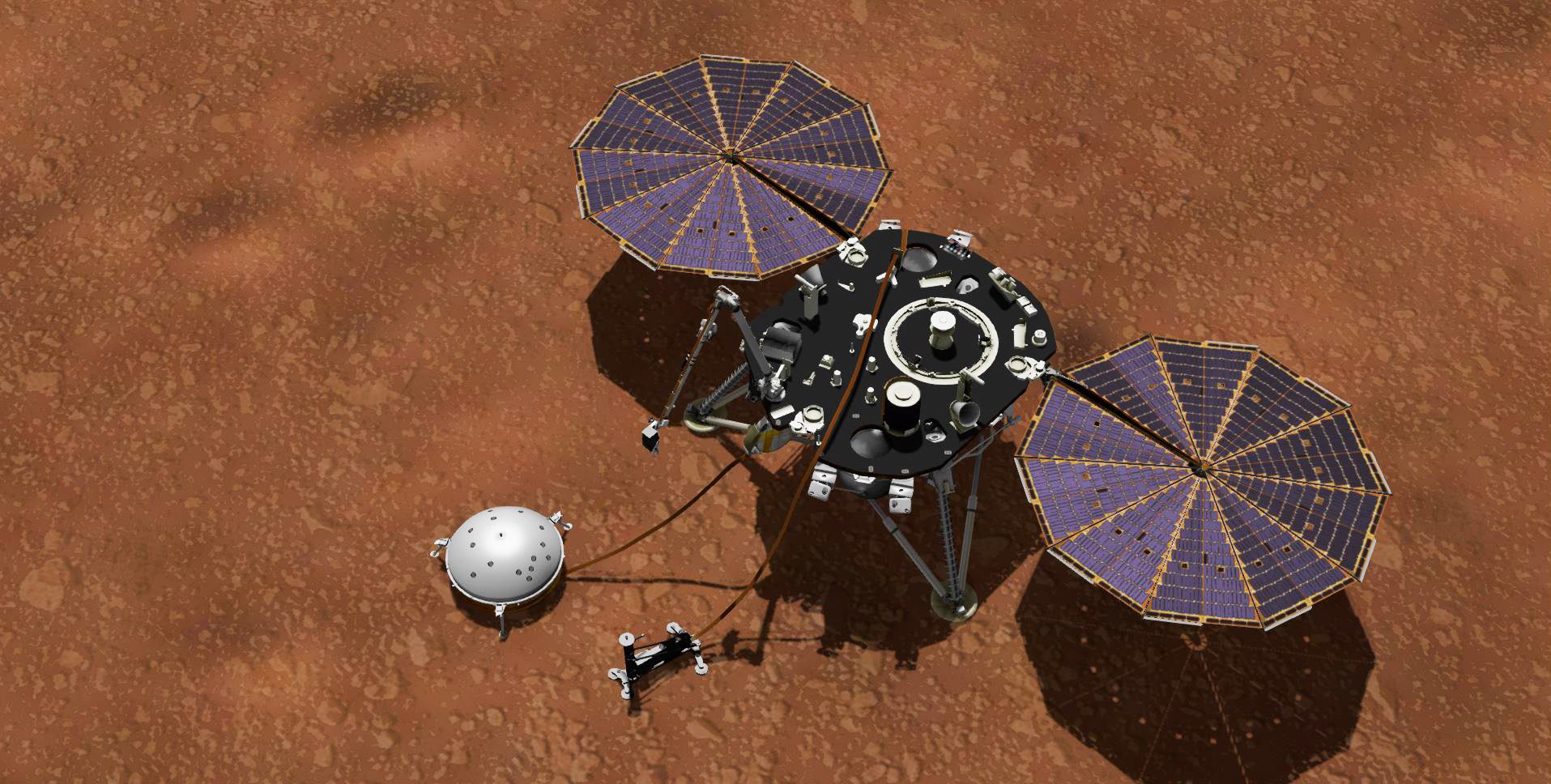What’s the Weather Like on Mars?
A new NASA robot is braving extreme temperatures to learn about the Red Planet.

A new NASA mission to the Red Planet will, for the first time, provide a daily weather report from Mars, where things right now are a whole other level of cold. So far, according to the mission’s website, recorded temperatures have maxed out at 15 degrees Fahrenheit and dipped as far as 140 degrees below zero.
So pity the InSight lander, the robot that has to sit there and register these abominable chills. The lander is located at Elysium Planitia, what NASA calls “a flat, smooth plain” just north of the planet’s equator. InSight—which stands for Interior Exploration using Seismic Investigations, Geodesy and Heat Transport—is, according to NASA, the first robot to conduct an in-depth study of Mars’s so-called “inner space”: “its crust, mantle, and core.” This research, the agency said, can help establish how Mars and other rocky planets—like Mercury, Venus, and our very own—formed over four billion years ago. Using the tools indicated in its name, the lander will measure the planet’s “vital signs”: its pulse, its reflexes, and its temperature—each of which can teach us about Mars’s composition, and how it compares to Earth’s.

The lander uses a group of sensors called the Auxiliary Payload Subsystem (APSS) to take stock of the planet’s weather, allowing us to follow along with the mission from here on Earth while also helping the scientists sharpen their research. Mars’s temperature swings can distort measurements taken by the lander’s seismometer and heat probe, so continuously tracking things such as air pressure and wind can help scientists determine whether a “marsquake” is actually occurring, or whether the instruments are simply recording “noise” from unrelated changes in the weather. APSS will be measuring the air pressure, air temperature, wind, and magnetic field for every second of every Martian day—known as a sol—for at least two Earth years, allowing enough time to account for seasonal variations. (One sol runs for approximately 24 hours and 39 minutes.)
The air pressure sensors have also proven useful in tracking low-pressure whirlwinds known as “dust devils,” which have left visible streaks on the planet’s surface. While we do see our own dust devils on Earth, the Martian variety are, according to a press release, far more imposing—registering heights of between three and six miles and, sometimes, diameters of more than 300 feet.
This mission does not mark the first time that scientists have taken on the role of Martian meteorologists, but it will provide a newly extensive extraterrestrial weather report that, ultimately, may help us learn more about our own planet, too.










Follow us on Twitter to get the latest on the world's hidden wonders.
Like us on Facebook to get the latest on the world's hidden wonders.
Follow us on Twitter Like us on Facebook